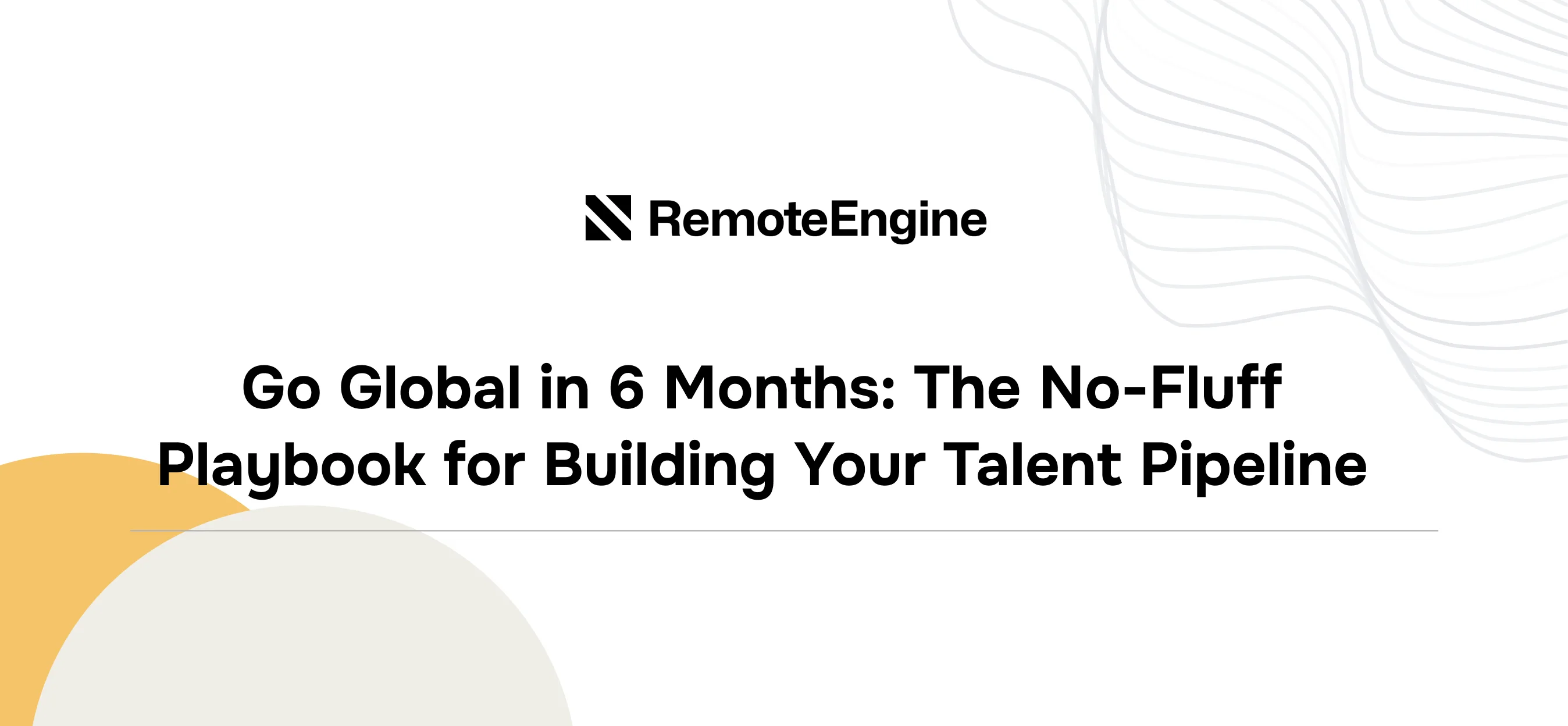
That perfect engineer you can't find locally? They exist. They just live in another time zone.
Going global feels like a massive, multi-year project, but it doesn't have to be. With the right focus, you can build a powerful international hiring engine in just six months. Forget the corporate slide decks; this is the actionable playbook for getting it done.
This is the most critical phase, and it has nothing to do with sourcing candidates. If you skip this, you’re building on sand. The goal here is to answer the hard questions first so you can move fast later.
Don't just open the floodgates. Pick 2-3 target countries or regions to start. Then, decide how you'll employ people there. Your main options are:
Employer of Record (EOR): The fastest way to get started. A third-party partner handles payroll, benefits, and compliance for you. Great for speed and testing new markets.
Contractors: Good for project-based work, but be very careful about misclassification. This can lead to serious legal trouble.
Set Up Your Own Entity: The most expensive and time-consuming option. Only do this when you are fully committed to a region.
This is the conversation everyone avoids, but you must have it now. How will you pay your global alent?
Decide if you'll pay based on:
- A single, global rate e.g., San Francisco salaries for everyone).
- Local market rates for each country or region.
- A blended approach that considers both location and role impact.
There's no single right answer, but having a clear, consistent policy prevents chaos and ensures fairness.
Now that your foundation is solid, it’s time to build the engine that will attract and manage candidates. Your local toolkit probably won't cut it for global recruitment.
Tune Your Tech Stack
Your Applicant Tracking System (ATS) needs to handle multiple time zones, currencies, and languages. Make sure your scheduling tools are seamless for candidates in different parts of the world. The goal is a frustration-free experience for both your team and your applicants.
Diversify Your Sourcing Channels
LinkedIn is not the only source of truth. The best tech talent might be on country-specific job boards (like Seek in Australia or StepStone in Germany), in local developer communities, or on platforms dedicated to remote work.
Instead of manually searching dozens of platforms, smart teams often use tools to tap into pre-vetted talent pools. For instance, a solution like Remoteengine can connect you directly with qualified engineers from around the world, which dramatically speeds up sourcing for key roles.
You’ve found the candidates. Now, how do you convince them to join and ensure they succeed? This is where you win or lose the war for talent.
Global-First Interviewing
Your interview process has to be designed for remote hiring.
Be Asynchronous: Can a candidate complete a take-home assessment on their own time?
Train Your Team: Teach interviewers about cultural nuances and how to avoid bias. A direct question that’s normal in the US might be uncomfortable for a candidate in Japan.
Showcase Your Culture: Use the interview process to demonstrate your company's values, communication style, and what it’s *really* like to work there.
Create an Onboarding Experience, Not a Checklist
How do you make someone in Lisbon feel as connected as someone at HQ? A great remote onboarding process is your answer.
This includes a "buddy" system, scheduled virtual coffees with teammates, crystal-clear documentation, and a welcome kit shipped to their home. The goal is to make them feel like part of the team from day one, not just another pin on a map.
Building a global talent acquisition strategy isn't about doing everything at once. It's about being intentional. Start with a solid legal and financial foundation, build a scalable tech and sourcing machine, and then double down on the human experience.
Stop limiting your talent pool to your zip code. The world is waiting.